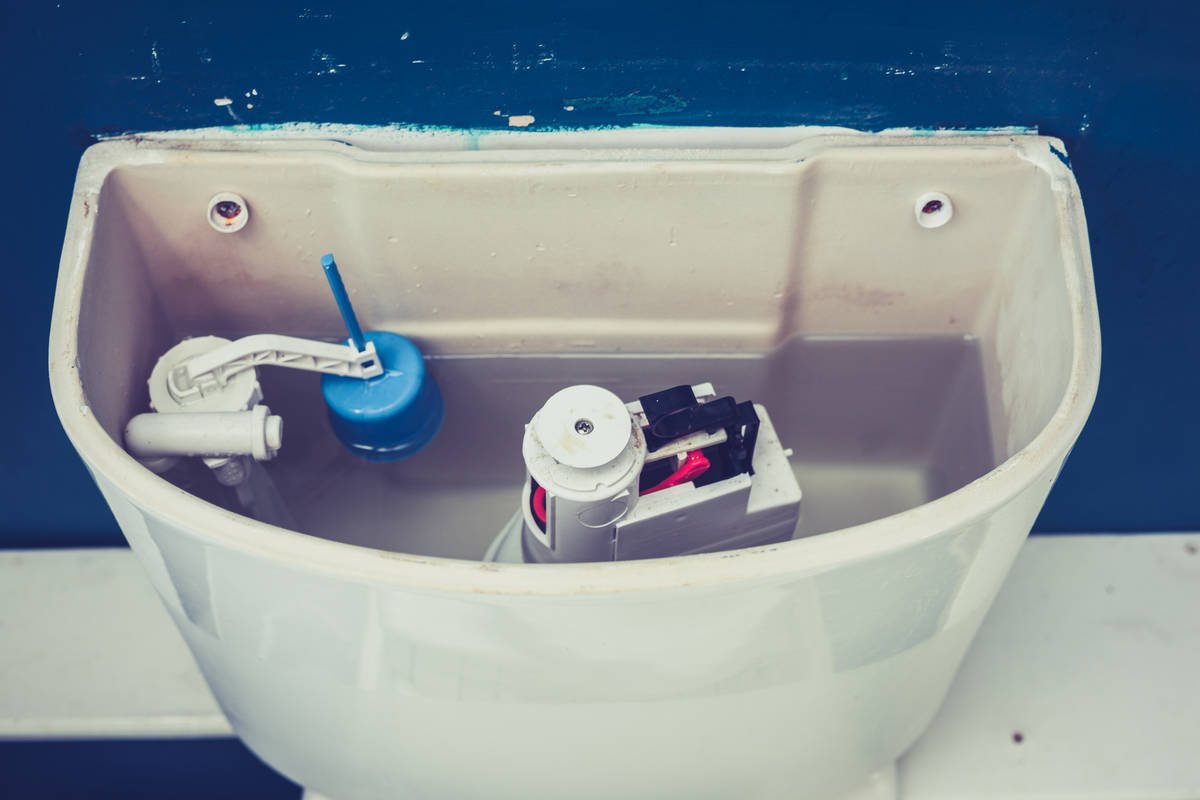Toilet leak usually caused by flapper or flush valve assembly
Q: My toilet is causing me fits. The water from the tank is slowly leaking into the bowl, and I can’t figure out why. I have replaced the flapper, but the problem persists. What else should I do?
A: That tiny trickle can be frustrating. It wastes water just as a bigger leak does and can interrupt your sleep when the toilet starts to fill for no apparent reason. That’s a dead giveaway that water is leaking from the tank.
There are many possible explanations for the leak, but let’s start with the easy ones. Begin by making sure the float is set at a level that won’t allow water to run into the overflow pipe. If the water in the tank is running into this pipe (it’s the one in the center of the tank about the diameter of a quarter), then simply adjust the float level down so that the water shuts off earlier.
The problem is usually with the flapper or flush valve assembly. The flush valve (aka Douglas valve) is what the flapper sits on. It is located in the center of the tank and has the overflow pipe rising out of it. Stick you arm into the tank (don’t worry, the water is clean) and push down on the flapper. If the water stops trickling into the bowl, you have found your problem.
Even if you replace the flapper, it may not fit correctly, or there may be damage to the rim sealed by the flapper. Try feeling around the rim of the flush valve for divots, cracks or deposits.
If pushing down on the flapper doesn’t help, you probably need to replace the flush valve or you may have a cracked tank. You can either replace the flush valve or you can try a product called a “flush fixer.”
The flush fixer is a hinged flapper/seat assembly that sits on top of the flush valve, exactly where the old flapper went. What makes this work is that on the bottom of the unit is a jelly-like substance that seals against the damaged seat of the flush valve. So, the jelly will fill in the areas and prevent leakage at the points where water got between the flapper and the damaged seat.
Replacing the flush valve is a chore, as it involves removing the tank from the bowl. So, you will need to turn off the water to the toilet, disconnect the supply line to the fill valve and drain the water from the tank. Remove the tank from the bowl by unbolting it from underneath (you may have to hold a screwdriver on the bolt to keep it from turning as you remove the nut). Gently lift the tank and set it on its side.
Next, remove the spongy-looking spud gasket by pulling it off, and then use either water pump pliers or a spud wrench to remove the locknut (this holds the flush valve in place). If you pull the refill tube from the overflow pipe, the flush valve will lift out.
To install the new flush valve, push the tapered washer onto the end of the threads and seat it so that the tapered end faces the threaded end. Shove the new valve into the hole and screw on the new locknut one-quarter turn past hand tight. Push the new spud gasket on and you are ready to reinstall the tank.
Before you do, however, check the bolts that hold the tank to the bowl. While you have the tank off, it’s a good idea to replace these bolts. In most cases, removing the tank will disturb them enough to get them to leak. It’s a simple matter of pushing a washer on the end and tightening it to the tank.
Pick up the tank and gently set it back onto the bowl so that all of the holes line up. Install a brass washer and a nut onto the end of each bolt and tighten them. Be very careful here. If you over tighten these bolts, it will crack the toilet.
Once the tank is secured to the bowl, reconnect the refill tube to the top of the overflow pipe and then hook up the water supply back to the fill valve. This should give you years of leak-free operation.
Mike Klimek is a licensed contractor and owner of Las Vegas Handyman. Questions may be sent by email to handymanoflasvegas@msn.com. Or, mail to 4710 W. Dewey Drive, No. 100, Las Vegas, NV 89118. His web address is www.handymanoflasvegas.com.
Do-it-yourself
Project: Toilet flush valve replacement
Cost: Under $20
Time: Under 1 hour
Difficulty: ★★★


















